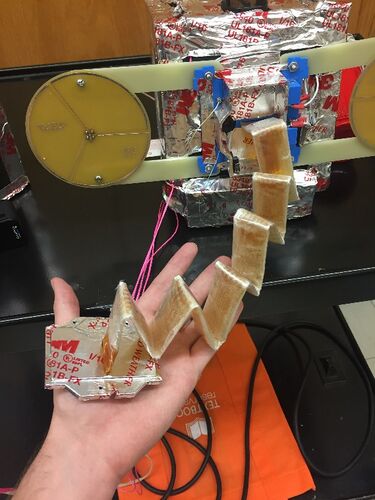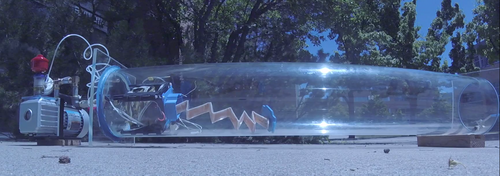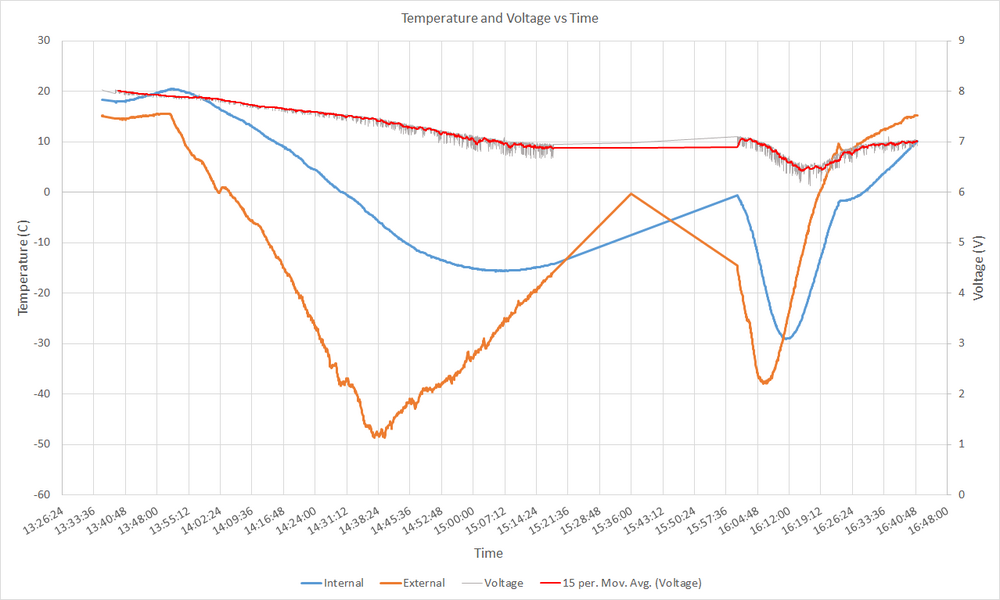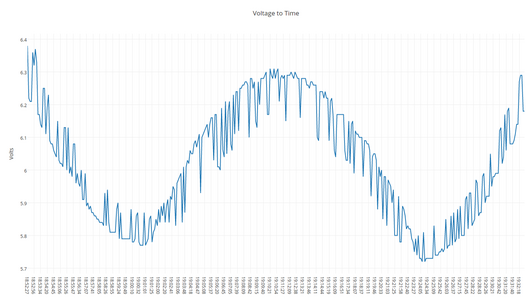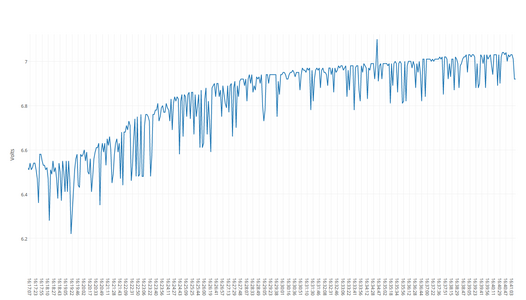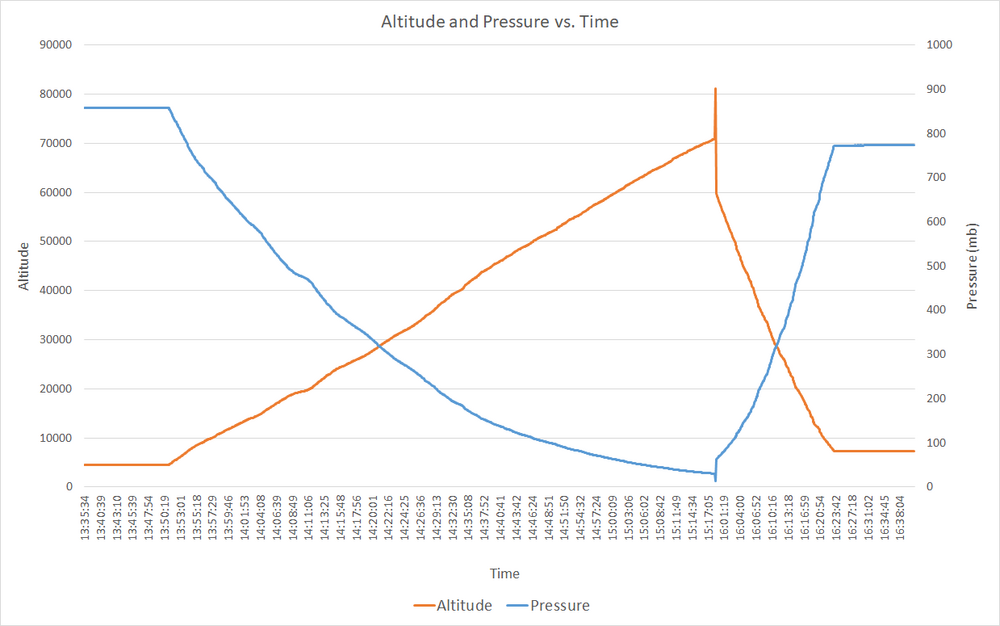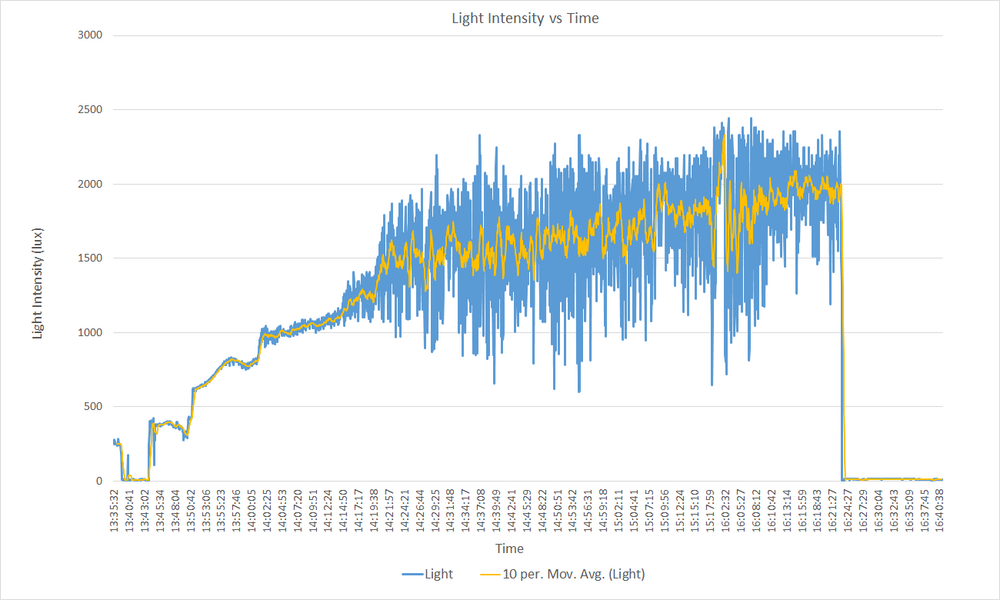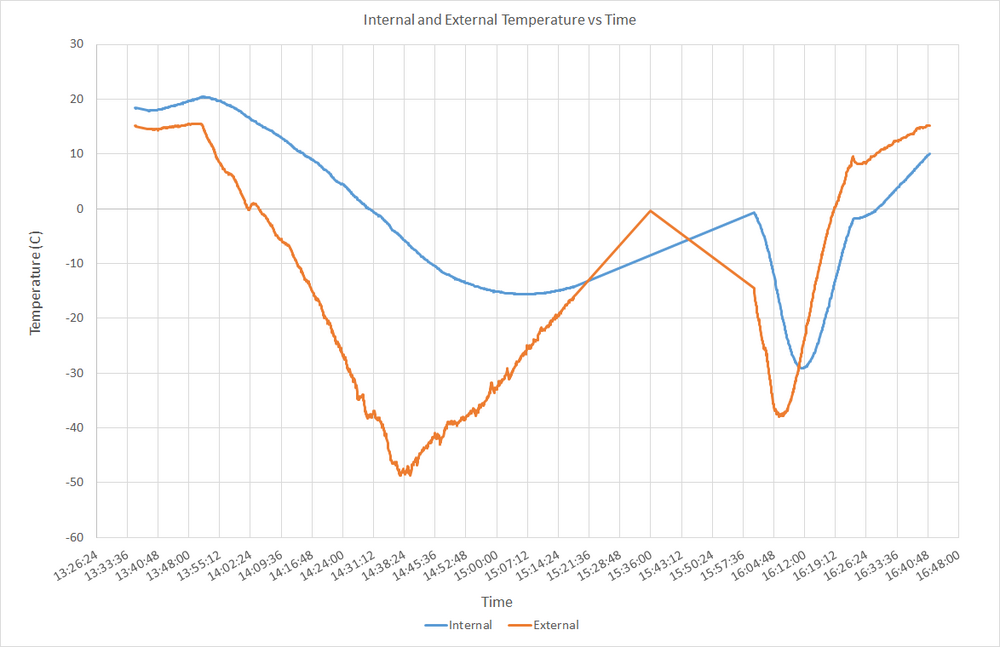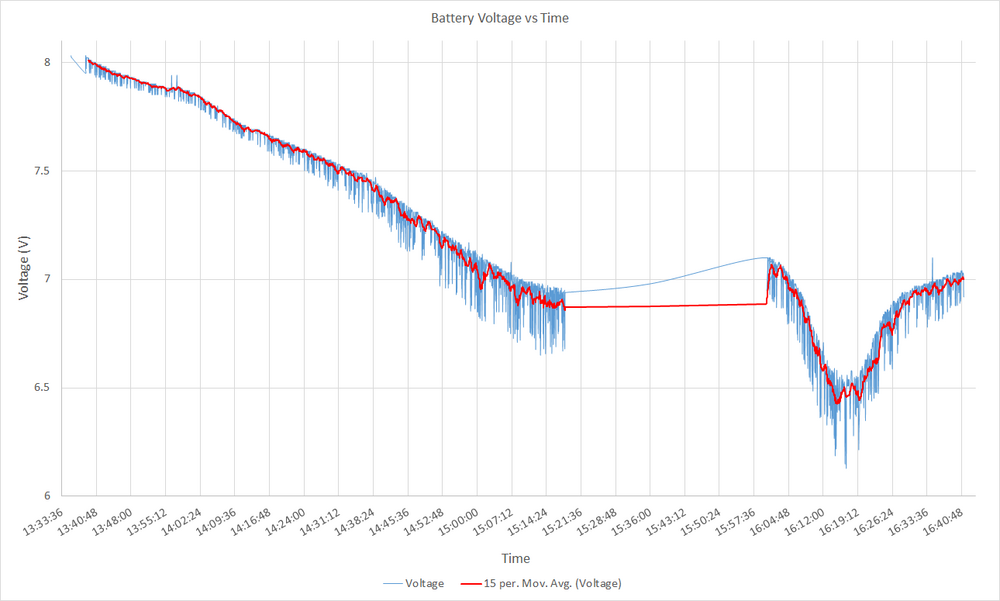Errno 3.141
|
Errno 3.141 17 June 2017 | |
|
|
Introduction[edit | edit source]
This report is a small follow up of the balloon flight that the Get Away Special Team completed on Saturday June 17th. Overall, the balloon flight was a success, as the goal was to deploy the Aeroboom and retrieve the payload for analysis after the recovery. We had two goals in mind during the flight. The first was to take care of our battery temperature problem. The second was to deploy the Aeroboom at a higher altitude, about 80,000 feet instead of the original 70,000 feet.
The first was solved by sticking the battery underneath the payload next to the camera. This kept the payload warm and the battery warmer since it was closer to all of the electronics instead of the walls of the payload. However, this is a temporary fix, and the electrical team report goes into further detail of what happened with the battery.
The second goal was finally achieved, but with some shocking results. As described below by the mechanical team, it seems that the boom was either caught on deployment and fully did not deploy or it was cured in the box. We later tested these two theories and determined that the extreme cold was a major factor. In testing the boom's deployment when extremely cold, we found that the resin froze.
Mechanical Team[edit | edit source]
Preparation[edit | edit source]
The Mechanical Team made three booms in preparation for testing, as well as for this balloon flight. The preparation and making of these booms was uneventful; there were no problems that arose while constructing the booms. The Mechanical Team also prepared a reusable box to test the boom deployment in the vacuum chamber. Initially, a small amount of putty was placed on the end of the booms that were put in to the reusable box. However, after removing the second boom from the box after deployment testing, it was found that the pressure from bolting down the reusable box with the putty could result in a breach of the seal of the outer layer of the boom. Thin layers of foam replaced the putty for buffering the booms going into the reusable boom-box.
Other than the problem with the putty, the deployment testing proceeded smoothly and a boom was chosen for the high altitude balloon flight. This boom was then glued into a more permanent box. During the process of tying pu the boom into the box, it was discovered that there was too much air in the outer layer of the boom, preventing the boom from being closed into the box. The air in the outer layer of the boom had not been there during the deployment testing two days prior. In theory, the outer boom is there to protect the fiberglass and resin, but has no effect on the structure of the boom during deployment.
It was decided to break the outer seal and remove air form the layer to allow for a better deployment opportunity and to allow packing for the flight. To remove the air, a small hole was carefully made in the outer layer without compromising the inner boom. After the air was released, Kapton tape was used to patch up the hole. The Mechanical Team will look further into the permeability of our materials to try to avoid such problems in the future.
The Flight[edit | edit source]
The third balloon launch of the summer, which took place on the 17th of June, had few mechanical issues. Except for the issue packing the boom, and the irregular deployment of the boom, the other mechanical systems functioned properly. The boom deployed at the correct altitude and at the correct time, but was unable to extend to its full length and harden into a rod. It instead hardened in a zig-zag fashion similar to the way it is stored in its box, but curved towards the side of the box opposite of the wire cutters as seen in figure 1.
What Went Wrong[edit | edit source]
The Mechanical Team believes that the end plate of the boom, when it deployed, got stuck on the wires that held the box together. This explains the curvature of the boom, and why it was unable to deploy into a cylindrical shape. Another, non-separate possibility is that the boom partially cured inside of the box. When the box is tied and tested in low pressure, the boom bulges against the endplate and can create a small gap between the endplate and the box, which could allow UV light exposure for some parts of the boom. Given that the box is situated at the bottom of the payload during flight, the light exposure of the boom would be minimal aside from motion caused by turbulence.
The Mechanical Team will be conducting further testing by placing booms and their boxes first in a cold environment for an extended length of time before deployment testing. In addition, the booms in their boxes will be left outside in the sun for several hours before deployment testing in the vacuum chamber. These tests should help to determine the cause of the zig-zag boom as well as prevent future problems.
Cold Testing[edit | edit source]
The Test[edit | edit source]
This test was performed on 23 June 2017. During this test a fully completed boom with UV curing resin was placed with the payload into a cold environment and then deployed in the vacuum chamber to test the effects of cold temperatures on the deployment of the aeroboom.
The Procedure and Results[edit | edit source]
The payload was placed into a cooler with dry ice reduce the temperature to about -50° C. After reaching this temperature the payload was then placed into the vacuum chamber and the boom was deployed in full sunlight. At the time of boom deployment the temperature of the payload had risen to about -13° C. Additionally, the boom was still in a zig-zag pattern and took a few additional minutes to reach full extension.
It should be noted that when the boom has been deployed in the past the boom immediately reached full extension upon deployment. As such, we could conclude that the deployment of the boom is affected by cold temperatures. However, it could not be determined whether the cold temperatures affected the viscosity of the UV curing resin, or the volume and pressure of the internal air in the boom. Further testing was needed.
Further Testing[edit | edit source]
A new boom without UV curing resin was constructed to undergo testing. At room temperature, this new, resinless boom immediately reached full extension upon deployment. After confirming this, the resinless boom was placed with the payload into the cooler with dry ice. Upon reaching a temperature of -50° C. the payload was transferred to the vacuum chamber and the boom was deployed. At the time of deployment the payload was at a temperature of about -30° C. and the boom immediately reached full extension.
Conclusion[edit | edit source]
From comparing the results of testing a resinless boom with a resin boom, it can be concluded that the cold temperatures affect the UV curing resin far more than the pressure from the internal air. One possible solution to help ensure full extension of a resin boom at cold temperatures may include using a UV curing resin that is less viscous than what we are currently using. Additionally, finding a method to slow down the curing process to allow time for the boom to reach full extension is also a solution worth looking into.
Electrical Team[edit | edit source]
Preparation[edit | edit source]
Due to the problems that arose because of the low voltage noted during the flight on the 20th of May, 2017, we determined to change the location of the battery from its carved out hole in the Styrofoam box to instead sit just above the camera. This change was made in order to better insulate the battery, in hopes that by so doing, the recurring voltage drop we have observed during extreme cold temperatures would not be so dramatic. The changed helped substantially, as was noted during flight on the 17th of June, 2017. Of primary importance, we measured that the battery never dipped below six volts the entire flight, despite being in the air for approximately two and half hours and reaching an internal temperature of nearly -30 degrees Celsius.
As noted in Temperatures and Voltage vs Time Graph, the voltage was the lowest when the internal temperature was the coldest. Upon warming back up, the voltage increased against to a steady out above 6.5 volts. There was a stretch of time between 100.32 minutes and 142.19 minutes into the flight where the voltage was not recorded on the SD card. This can be seen in the graph between times 15:14:24 and 16:04:48. We are not quite sure what caused this error to occur, though the times match up with when the boom deployed and the camera attempted to initialize taking some photos. During this time, no other information was recorded as well, including the exact boom deployment times and the hex values produced by the camera taking photos. Despite this lapse in recording to the SD card, data was still transmitted over the radio to us.
Comparison to Previous Launch[edit | edit source]
Concerning the launch on the 20th of May, 2017, the only voltage data we have was recorded the last seven minutes of flight at an altitude about 16,300 feet and falling. After those seven minutes, the payload landed in a tree about 8,640 feet and hung around for another 33 minutes before the data stopped recording. As seen on its graph, the payload hit the tree about time 18:59:30 at around 5.81 volts. We know from the data transmitted to us during flight, however, that the voltage also got this low and lower in the air, specifically about the time that the boom first attempted to deploy and entered a restarting loop.
In comparison, on the 17th of June, 2017, the voltage stayed much more consistent. Over the same altitude drop, the voltage steadily climbed back up to 7 volts and never dipped below 6.2. This payload fell a lot faster, dropping from about 16,300 feet at the beginning of the data set, to hit about 8,630 feet in five minutes, or about time 16:22:30. At that point, the battery as at 6.53 volts and the payload was still falling to hit the ground not long after at about 7,300 ft.
In conclusion, our efforts to better insulate the battery were successful. The problems that arose during the most recent flight were not due to low voltage. In preparation for our next flight, our focus will be on determining the SD card recording problems and why the camera does not take a picture. It is our suspicion that the two observed problems are actually part of the same error, which we intend to track down and fix.
